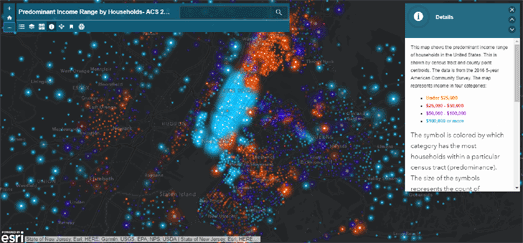Сообщения
Сообщения за январь, 2018
How Minimum is the Minimum Wage?
- Получить ссылку
- X
- Электронная почта
- Другие приложения
What is Here & There
- Получить ссылку
- X
- Электронная почта
- Другие приложения
Mapping with NASA
- Получить ссылку
- X
- Электронная почта
- Другие приложения
The LGBTQ+ Traveler
- Получить ссылку
- X
- Электронная почта
- Другие приложения
Income Inequality in Your Town
- Получить ссылку
- X
- Электронная почта
- Другие приложения
From Coastal Trade to Global Shipping
- Получить ссылку
- X
- Электронная почта
- Другие приложения
Spying on the Spies with Strava
- Получить ссылку
- X
- Электронная почта
- Другие приложения
The Culture of Street Names
- Получить ссылку
- X
- Электронная почта
- Другие приложения
Super Moons & Glitter Balls
- Получить ссылку
- X
- Электронная почта
- Другие приложения
The Most Popular Street Names in America
- Получить ссылку
- X
- Электронная почта
- Другие приложения
How Much is Your Vote Worth?
- Получить ссылку
- X
- Электронная почта
- Другие приложения
How Popular is Your Street Name?
- Получить ссылку
- X
- Электронная почта
- Другие приложения
Educating Boston
- Получить ссылку
- X
- Электронная почта
- Другие приложения
1890's Seattle in 3D
- Получить ссылку
- X
- Электронная почта
- Другие приложения
How to Evict a City
- Получить ссылку
- X
- Электронная почта
- Другие приложения
Europe's Population in 3D
- Получить ссылку
- X
- Электронная почта
- Другие приложения
What Each State is Reading
- Получить ссылку
- X
- Электронная почта
- Другие приложения
Russia's World Cup Stadiums
- Получить ссылку
- X
- Электронная почта
- Другие приложения
The UK's Most Dangerous Roads
- Получить ссылку
- X
- Электронная почта
- Другие приложения
How Far Can You Get in Ten Minutes?
- Получить ссылку
- X
- Электронная почта
- Другие приложения
Mapping the World's Favorite Songs
- Получить ссылку
- X
- Электронная почта
- Другие приложения
Poles of Inaccessibility
- Получить ссылку
- X
- Электронная почта
- Другие приложения
The History of the Russian Empire
- Получить ссылку
- X
- Электронная почта
- Другие приложения
The First Modern Map of London
- Получить ссылку
- X
- Электронная почта
- Другие приложения
Which Country is Bigger?
- Получить ссылку
- X
- Электронная почта
- Другие приложения
The Scaled Size of the Solar System
- Получить ссылку
- X
- Электронная почта
- Другие приложения
Where Have All the Poppies Gone?
- Получить ссылку
- X
- Электронная почта
- Другие приложения
Supply Chain Mapping
- Получить ссылку
- X
- Электронная почта
- Другие приложения
May the Map Be With You
- Получить ссылку
- X
- Электронная почта
- Другие приложения
London's Busiest Tube Stations
- Получить ссылку
- X
- Электронная почта
- Другие приложения
Map of the Day
- Получить ссылку
- X
- Электронная почта
- Другие приложения
How to Rob a Country
- Получить ссылку
- X
- Электронная почта
- Другие приложения
How Well Does Your Home Score?
- Получить ссылку
- X
- Электронная почта
- Другие приложения































